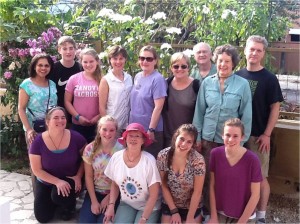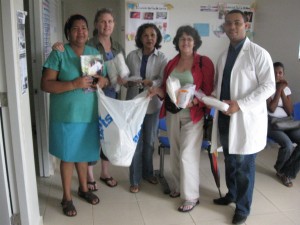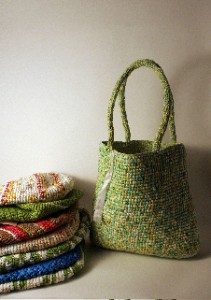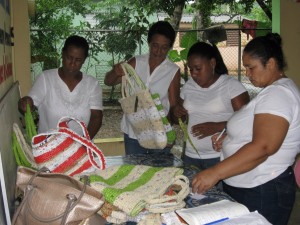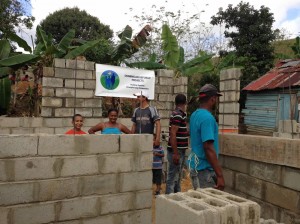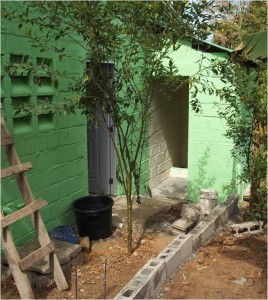Rita started Dominican Republic Projects (DRP) after a hurricane struck her hometown, Cotui, 15 years ago, and continues to manage it to this date. Operating under the auspices of Norwich Congregational Church-UCC, DRP is a non-governmental organization “committed to cross-cultural understanding and self-sustaining initiatives in health, education and the environment in the town of Cotui, Dominican Republic.” DRP has been a significant part of Rita’s migrant experience, acting as a way for her give back to her home in Cotui through health services, construction, and sustainability initiatives.
The Birth of an NGO
 I hold the central region of the DR dear to my heart because it has taught me how to survive and contributed to my capacity development; in many ways, it has defined who I am today. When Cotui was impacted by the hurricane in 1998, I decided to take steps to address the situation. I didn’t know my degree of influence at that time, but the hurricane was the precipitating factor which led me to start Dominican Republic Projects.
I hold the central region of the DR dear to my heart because it has taught me how to survive and contributed to my capacity development; in many ways, it has defined who I am today. When Cotui was impacted by the hurricane in 1998, I decided to take steps to address the situation. I didn’t know my degree of influence at that time, but the hurricane was the precipitating factor which led me to start Dominican Republic Projects.
When the hurricane shook things up in my country, I appealed to the community I lived in for assistance. I looked for organizations to accept the relief donations—35 very large boxes—that I had collected. Initially, I looked to international organizations, such as the Red Cross and an  organization through the United Church of Christ. I was looking for ways for them to handle what I had collected and transport it. I also wanted to designate where it would go, but it became a major obstacle to any organization accepting the donations because I wanted to designate it for that particular town. I did that in part because I wanted the villages in the town to receive some assistance, but also because I knew how challenging the systems are in my country. There is a lot of self-interest and corruption. If you don’t designate where those boxes go; they could go anywhere—they could go to someone who needs it but they could also go to somebody’s next-door neighbor and not someone I would want it to go to. I was very invested in that the people in the villages in Cotui would be the ones receiving it.
organization through the United Church of Christ. I was looking for ways for them to handle what I had collected and transport it. I also wanted to designate where it would go, but it became a major obstacle to any organization accepting the donations because I wanted to designate it for that particular town. I did that in part because I wanted the villages in the town to receive some assistance, but also because I knew how challenging the systems are in my country. There is a lot of self-interest and corruption. If you don’t designate where those boxes go; they could go anywhere—they could go to someone who needs it but they could also go to somebody’s next-door neighbor and not someone I would want it to go to. I was very invested in that the people in the villages in Cotui would be the ones receiving it.
To that end, having learned that no organization would accept it if I wanted to designate it, I then took it on. Up to that time, I didn’t know I was capable of rallying the huge amount of support and effort that I did. And it wasn’t difficult to rally the support of the school, the community, the Women’s’ Club, and the Women’s Fellowship at the Church to support what needed to happen and get a shipping company in the area. We eventually got a shipping company in New Jersey that was willing to accept it and take it directly to that town.
Making an Impact
For the next 15 years, I continued my work with the town in various ways, on many different projects. There wasn’t a definite moment in time when I made a conscious decision to proceed in the direction that I did. I didn’t have to file anything and for many years, I functioned  without an NGO. I was just under the auspices of other organizations. (You can do that in my country; you are not obliged to have an NGO.) Finally, last year in 2012, I decided to create one so there is a bona fide organization that represents all the work we do. We are now a nonprofit under the Norwich Congregational Church; we are not a freestanding nonprofit. I made a conscious decision not to be a freestanding nonprofit here in this country. We are, however, a freestanding nonprofit in the Dominican Republic. Now I have an organization that speaks to all the projects, but all those other organizations continue to collaborate with me.
without an NGO. I was just under the auspices of other organizations. (You can do that in my country; you are not obliged to have an NGO.) Finally, last year in 2012, I decided to create one so there is a bona fide organization that represents all the work we do. We are now a nonprofit under the Norwich Congregational Church; we are not a freestanding nonprofit. I made a conscious decision not to be a freestanding nonprofit here in this country. We are, however, a freestanding nonprofit in the Dominican Republic. Now I have an organization that speaks to all the projects, but all those other organizations continue to collaborate with me.
I’ve received a lot of volunteers through Dartmouth-Htichcock Medical Center where I work, the community, and the Peace Corps. There isn’t a formal collaboration with Dartmouth-Hitchcock. Because I practice nursing there, what I do has become a magnet for others to contact me to know how they can get involved.
While it wasn’t my intention from the onset to recruit nurses or doctors, I became a vehicle for getting them involved. I don’t really have to recruit because so many people write to me about participating in our work. That also happens in my community outside of the hospital; people hear or read about the work and they will support or participate in it. I end up taking community members with me all the time and I’ve done so for a number of years now. For example, in 2006, we brought a team of two nurses, a baker, and a clown. Some of the projects that we’ve worked on include building and remodeling a school and community center, constructing a community oven and a rural clinic, funding a local nursing home, and founding a women’s cooperative recycling program.
Medical Projects
Because I am a nurse, my access to equipment and medical supplies is fairly good, so I brought them with me. Up to that time, they did not have equipment that could measure the strength of reading glasses, and if people from other villages needed glasses, they would have to travel to other towns and only if they had the money to pay the transportation, so they didn’t go. So I found somebody in this community who donated this equipment and now they have it in the town that covering 50,000 people—that’s a large population not having to spend to travel just simply to travel to optometrist. They have an optometrist there.
We also received additional funding to help complete the building for a nursing home and for the diabetes section of a health center. This was the beginning of the rural clinic, which began in 2009. The clinic is now completely finished.
Women’s Cooperative Plastic Bag Recycling Program
One project is recycling plastic grocery bags from local supermarkets, where women crochet handbags out of disposed plastic bags. This has been highly successful. The women were recently selected as participants in the Santa Fe International Festival, a fair which brings artisans from around the world. Out of 300+ artisans, they select about 190-200. The women from the cooperative were part of those selected this year and they will be flying to attend the fair in July. It’s a very important fair in this country. You have people flying from all around to the world to go to this fair. It’s a wonderful platform for promoting their product.
The women really stand out in terms of persistence with what they have done both in terms of collecting the plastic within their communities and using what I had brought to them; I’ve started bringing fewer and fewer bags from here, because the goal was sustainability. So, through that, they have gone for their education through the funding of the bags. And the sixth graders are also now in high school. Some of them are in two-year programs. For the program’s success, the town is recognizing my work through resolutions and so on.
Supporting Schools
I’m not into building schools—the government does that in my country. But we did help with remodeling the schools. One of the first construction projects was in 2003. The school was in very poor condition and you could probably move the columns with your fingers. So then I brought people from the US who worked with me and that whole community also worked with me. We built a community center school with the agreement that they would use it for 5-6 years while their school was being built. There were other schools where I also helped with remodeling, books distribution, and equipment distribution.
Community Ovens
We also built community ovens and worked with that community on a baking initiative for them to bake and sell. In 2005, a King Arthur Flour baker went with me and since then they have had five trips with me for that very purpose. Peace Corps volunteers were instrumental in the installation of these ovens and spearheaded the project with me. I was here and they were there. And I would travel three or four times a year to support the program and do fundraising.
Now, with the ovens, if somebody in the community decides to go bake and sell, they will do so, rather than coming together as a whole community to bake and create a business to sell, which is really what they have the option to do—to create a cooperative venture.
Building Houses
We are not in the business of building houses, but there is a family that I have been watching for about seven years. Right now, their home is about to fall. And yet you go to visit them and they would act like you were being welcomed into their castle. You never would have thought of how bad the house was by the way they behave. They’re wonderful, humble, joyful, appreciative people, and I’ve known them for 7 years. They have three children. One of them is disabled. Her husband earns $60, which is less than $2 a day. And he committed his $60 per month to pay the bank back for a loan, so he has no salary whatsoever in what little he does. So through a series of decision-making with the community, people and organizations who knew them, I went ahead and fundraised the money for their home.
The organization had started to do house-building, but the situation was so bad the only piece of furniture in her living room was a table. We took a month to build a tiny house between February and March; it was just enough so they could live somewhere safe in preparation for the hurricane season in June. They moved the table out of the living room to put it in their new home and part of the wall collapsed in. So it has been our goal to see if the home could be done before the hurricane season began.
Vision for the Future
I haven’t really thought of it as an evolutionary process, but it clearly was an evolution for me. For the last couple of years, I have been developing and establishing the NGO in the DR and giving it recognition and right now, we are establishing its financial basis. We’re working really hard to establish its financial base. I’m envisioning that we would continue to do this for the next five years—it takes that long to build a financial base to support the nonprofit organization. I’m not anticipating another major project, but we will focus on building the financial base and look at what projects we can address hereon forward.
Looking into the Future, Building Hope
I spend too much time on DR Projects—too much time. I make jokes of myself and tell friends I am returning from my executive volunteer job—the unpaid executive job. It’s a lot of time, but there’s a passion there; there’s a dedication there that I’ve discovered in me. Working at Hitchcock gives me a flexible schedule and allows me to take blocks of time that I can dedicate to the work I do. A few years ago, I was offered a per diem schedule as a way to maintain a flexible schedule and it fit very well with where I was then and what I needed.
It’s been a rewarding experience. There are so many negative things going on in struggling communities that getting engaged with them in accomplishing a goal together feels like I am giving my part in contributing to a sense of hope. I know that it is not all dismal, that in the midst of the challenges and chaos they live in, there is still the possibility of hope. That has been a motivating force all along—seeing my efforts turn into something that is long-lasting for the community, that they themselves have become the instrument for.
However, I know that the organization won’t go on forever. When that mission and vision was first developed for the organization in 2006, the goal was to foster sustainable development that is self-sustaining and not dependent on me or any one person. The goal is that the community itself rises to develop what they envision and receive support through navigating the social structure, a gain in advocacy, and gaining loans, and that in each project, I could step aside once it was accomplished. And these have been my goals every time.
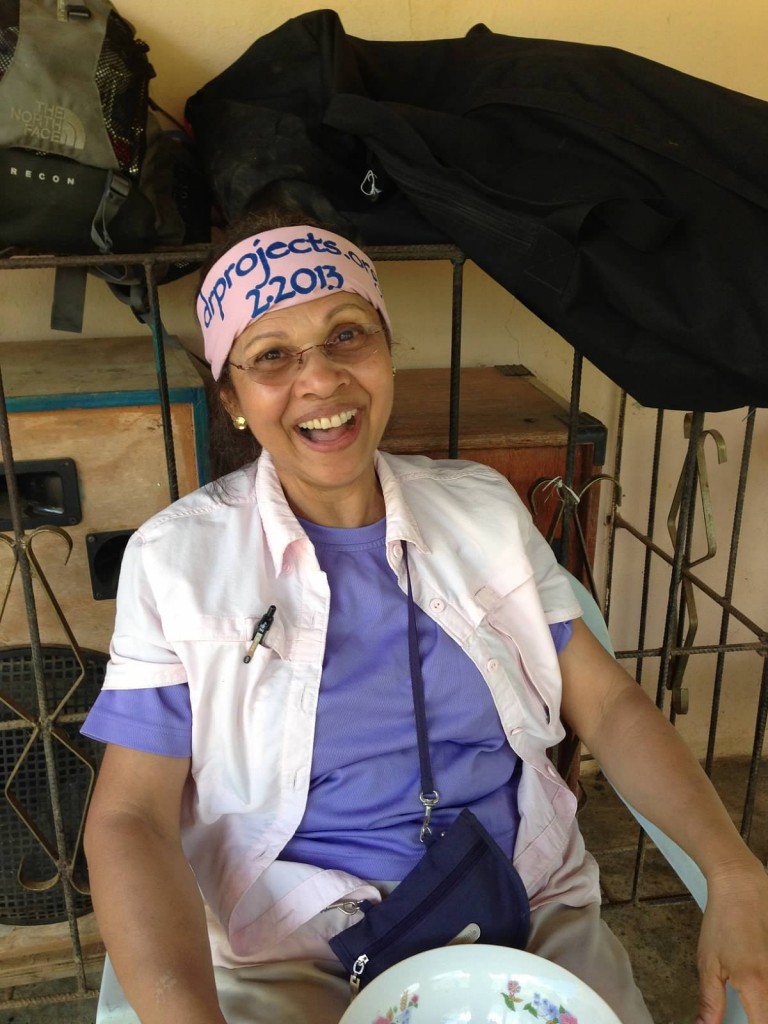 The landmark project for that was the rural clinic that I spearheaded; it was certainly a wonderful collaboration between institutions and the town, as well as nationally. I brought people to build the clinic. We had entire community involvement building this clinic—this was a village of about 900 residents. Right now, through the Peace Corps volunteer who is there, we are appealing to the Health Ministry, who takes and makes the decision to assume full responsibility for furnishing, staffing, and maintaining it. And how easy was it for them! They had some costs, but certainly not the cost they would have had if they were to start from scratch. And we’ve had tremendous contribution from the Peace Corps to make it happen, including their engineers, who helped design the base of the rural clinics. Now I visit and the entire community knows me well. But I’m a visitor; they’re the clinic. So they’re responsible for it; they run it; they maintain it; and I love it! I love being able to do that—be a catalyst to change, help something happen, and then step aside and leave the ownership to those who are impacted by the change and have created the change.
The landmark project for that was the rural clinic that I spearheaded; it was certainly a wonderful collaboration between institutions and the town, as well as nationally. I brought people to build the clinic. We had entire community involvement building this clinic—this was a village of about 900 residents. Right now, through the Peace Corps volunteer who is there, we are appealing to the Health Ministry, who takes and makes the decision to assume full responsibility for furnishing, staffing, and maintaining it. And how easy was it for them! They had some costs, but certainly not the cost they would have had if they were to start from scratch. And we’ve had tremendous contribution from the Peace Corps to make it happen, including their engineers, who helped design the base of the rural clinics. Now I visit and the entire community knows me well. But I’m a visitor; they’re the clinic. So they’re responsible for it; they run it; they maintain it; and I love it! I love being able to do that—be a catalyst to change, help something happen, and then step aside and leave the ownership to those who are impacted by the change and have created the change.
For more information on DRP, visit: www.DRProjects.org

